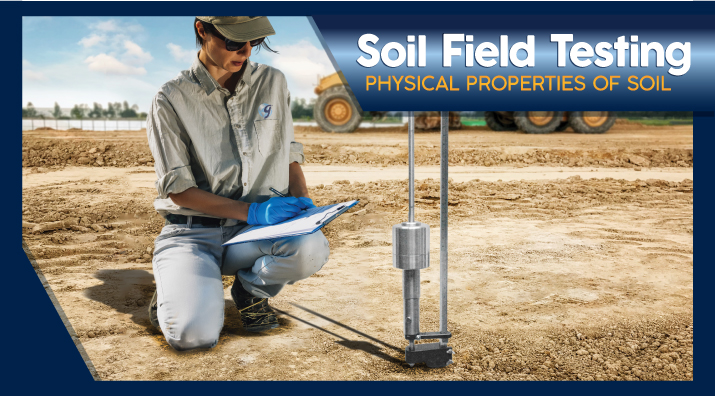
Soil is a natural material that is sometimes employed as a construction material without modification. It is crucial to understand how it performs in its original (in-situ) environment. For this article, we will examine various field tests of soil and the equipment required to perform them.
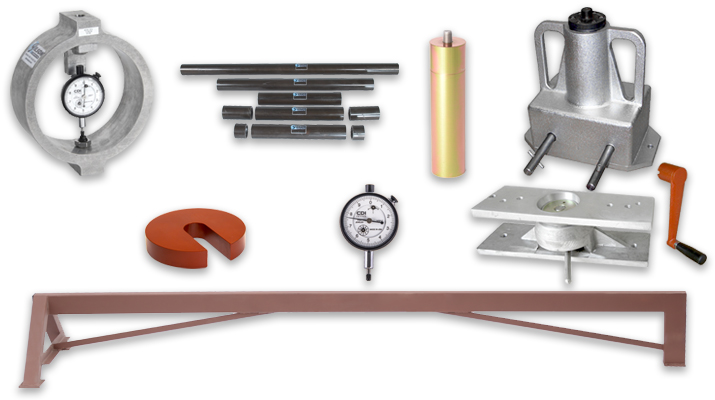
Soil Penetration Tests
The pocket-type penetrometers and shear testers discussed in Soil Classification: Foundation and Pavement Design Starts Here are designed for the classification of individual soil samples. More comprehensive project site evaluations require more substantial equipment. Field investigations to determine the in-place strength of soils by penetration are straightforward and a convenient way to collect information for geotechnical evaluations. Various penetration tests are a popular and reliable way to assess fine-grained cohesive soils.
- California Bearing Ratio (CBR) field tests measure the penetration resistance of a 2in (51mm) diameter piston into subgrade soils or compacted base materials. A loading jack braced against a heavy reaction load forces the piston into the test surface. The ASTM D4429 field CBR test method is currently in withdrawn status, but the practice is still widely used for pavement designs. The U. S. Army Corps of Engineers standard MIL-STD-621A is similar to the ASTM method.
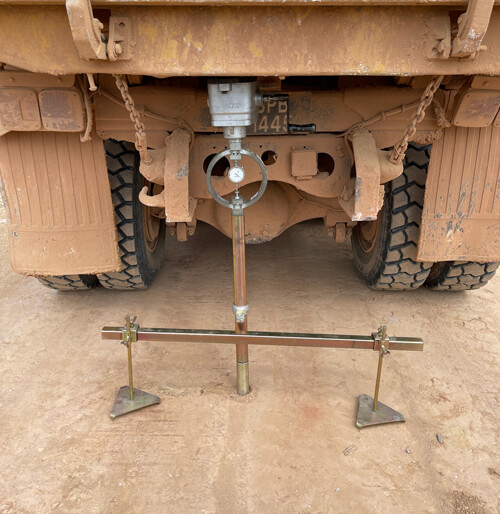
The corresponding ASTM D1883 laboratory CBR test measures the penetration resistance of a similar piston into soils compacted in molds.
Field CBR Equipment
- Two-speed loading jack is braced against a reaction frame or heavy equipment to provide resistance to the loading forces of the penetration apparatus.
- Penetration pistons forced into the soil surface measure penetration resistance.
- Load rings and dial gauges measure total load force and piston penetration distance during testing. A dial support bridge allows the exact placement of dial gauges for accurate deflection measurements.
- Surcharge masses simulate confining loads on soil surfaces during CBR testing.
- Piston extension sets position the CBR piston properly against the soil surface for convenient test setups.
- Complete sets of equipment for field CBR tests conveniently package all the required components together.
- Dynamic cone penetrometer (DCP) is a fast and efficient way to test undisturbed or compacted soil materials in-place at depths up to 6ft (1.8m). The original design by the United States Army Corps of Engineers meets the requirements of ASTM D6951, and test results help to estimate CBR values and identify strata thickness.

A steel cone mounted on rods is driven by manual drop hammers of different weights to penetrate the soil. Blow counts of the drop hammer are recorded and compared to the penetration depths to calculate resistance. Rod extensions allow greater testing depths, and disposable cones are available to avoid difficulties of extractions.
Dynamic cone penetrometers are available with a single hammer mass for weaker soils or as a set with dual-mass hammers for use in stiffer soils. Accessories for both include extra or disposable cones and additional extension rods.
- Static Cone Penetrometer evaluates the stiffness, compaction, and bearing capacity of fine-grained soils. Penetration cones with 60° sides are attached to rods and manually pushed into the soil with a T-handle. A hydraulic load cell displays cone stress directly on a dial gauge. 1.5cm² or 3cm² cones are available.
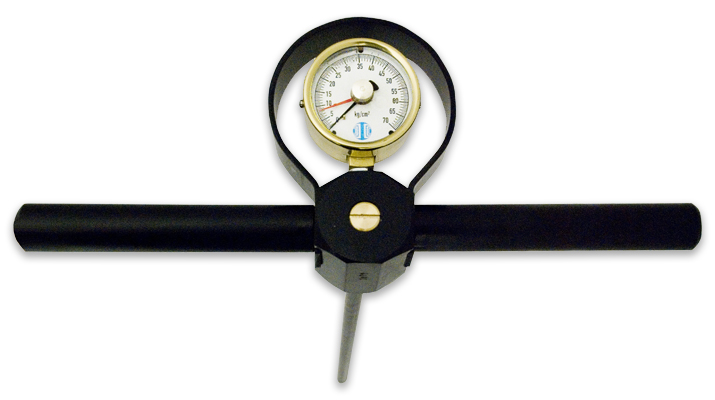
- Proctor Penetrometer is a spring-loaded vertical force gauge with a T-handle graduated from 10lbf to 130lbf (0.04kN to 0.6kN). The complete kit includes nine penetration needles ranging from 1/40in² to 1in² (0.16cm² to 6.45cm²). The Proctor penetrometer compares compacted soil characteristics in the field to findings of laboratory moisture/density relationships (Proctor tests).
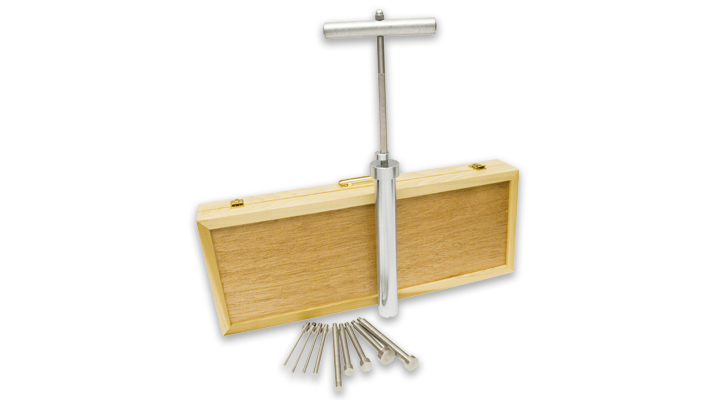
Soil Density
The density of soil is the relationship between its mass and volume. Usually expressed as unit weight, density is an essential property in geotechnical engineering when calculating soil-bearing capacity. The density of natural formations of fine-grained cohesive is easily measured by extracting intact samples and determining their mass and volume. Shelby tube samples provide the most accurate density values but require full-sized drill rigs for proper sampling.
- The soil density volumeter is portable, manually operated, and easily carried in a field kit for on-site evaluations. A threaded stem adjusts the depth of a piston inside the sampling cylinder, and graduations on the stem indicate cylinder volume. A sample extracted from the soil formation is trimmed flush, the volume noted, and the sample weighed to calculate density. Sampling is performed either horizontally or vertically
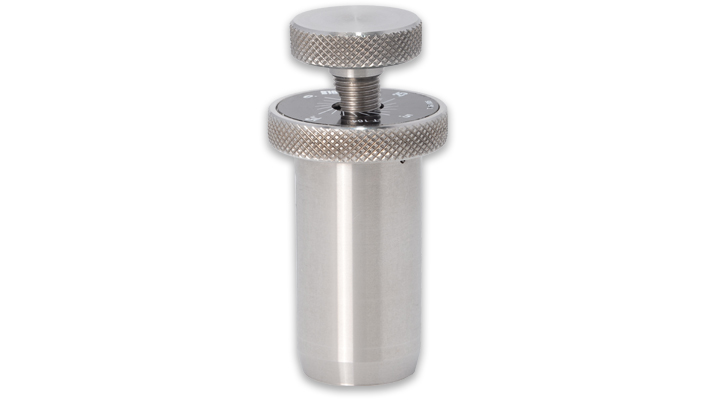
This earlier blog article Soil Density Testing? 3 Test Methods You Can Count On discusses field density testing of engineered fills based on laboratory Proctor tests. Sand cone, rubber balloon, and other density devices are used for those applications.
Soil Moisture
Even small changes in moisture content have a direct impact on the strength, density, and bearing capacity characteristics of soils. Collecting a representative sample and returning it to the laboratory is one option, but a test that yields fast results on-site may have more value.
- Gas pressure moisture testers, collectively known as “Speedy” moisture testers, provide reliable soil moisture values in just a few minutes. These devices have been around since the 1950s, and the procedure in ASTM D4944 and AASHTO T 217 has correlation methods to laboratory oven-dried moisture tests for improved accuracy.
A small sample of soil is placed in the testing chamber, along with a measured amount of calcium carbide reagent. The assembly is sealed and agitated for 1 to 3 minutes as the reagent reacts with moisture in the soil. The pressure build-up from the reaction is displayed on the analog dial gauge.
- Kelway soil testers measure the electrical potential between two electrode plates when inserted into the soil. The integral dial gauge shows a relative moisture value. The display shows the degree of saturation rather than oven-dried mass, so the reading is not a direct correlation to oven-dried moisture values. The meter is good at distinguishing comparative differences in moisture at different locations. The Kelway also indicates soil acidity with ±0.2pH accuracy.
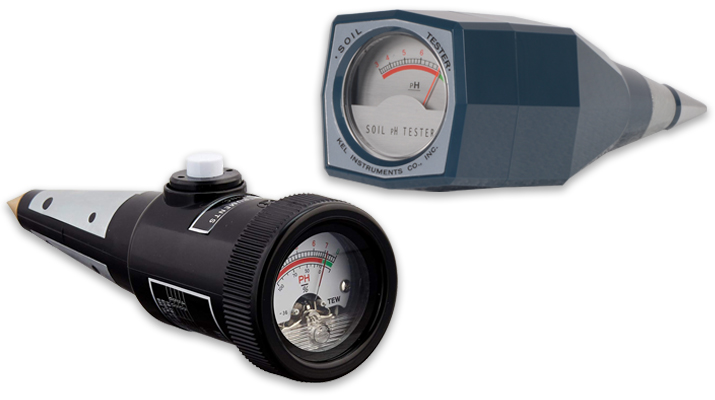
- A hot plate and a portable balance is the tried-and-true method for field moisture determinations. Following ASTM D4959, a moist sample is weighed, dried over direct heat, and weighed again to determine moisture loss. The results are accurate and reliable when performed correctly, but the process is time-consuming when compared to the gas-pressure method.
Soil Permeability/Infiltration/Percolation
Field measurements of soil permeability are used for environmental projects or when designing leach fields for septic systems. The simplest “perc” tests are run by filling a hole with water and observing the time it takes to drain.
- Double ring infiltrometer tests performed following ASTM D3385 collect permeability data in a controlled manner for advanced analysis of soil hydraulic conductivity.
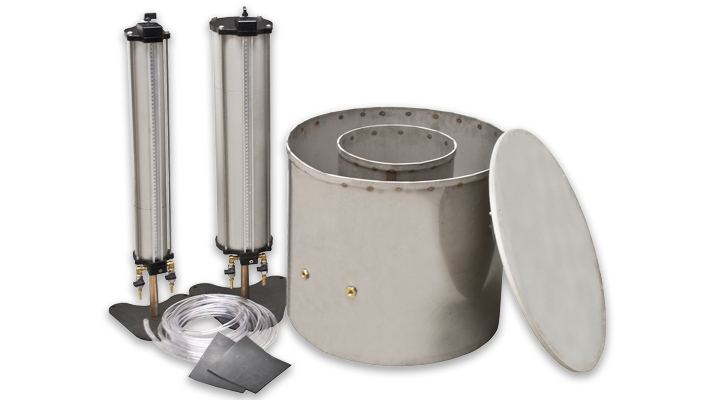
Soil Resistivity
Determinations of the electrical resistivity of soils help to estimate expected corrosion rates for underground structures and provide a basis for the design of cathodic protection systems.
- Soil resistivity apparatus measures the electrical resistance of soils using the Wenner 4-pin method described in ASTM G57. Four stainless steel pins inserted into the soil at predetermined spacing provide readings that are averaged for results. Values can also be determined in the laboratory with ASTM G187 and AASHTO T 288 test methods using some of the same equipment.
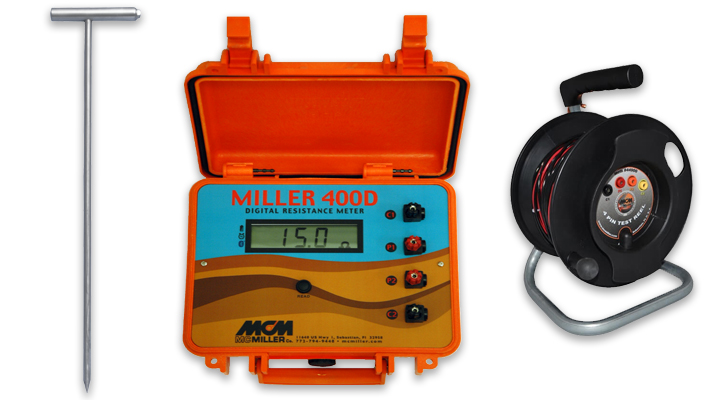
Soil Acidity
Soil pH is usually thought of in terms of agricultural soils but is relevant in geotechnical engineering as well. Corrosion rate estimates of buried structures factor in both electrical resistance and soil acidity. Research has determined that natural or modified pH levels can also affect the mechanical properties of soils.
- Digital pH meters meet the requirements of ASTM D4972 and AASHTO T 289 for testing the acidity of soils. Sample preparation is straightforward, the meters are simple to operate, and most models operate in laboratory or field environments.
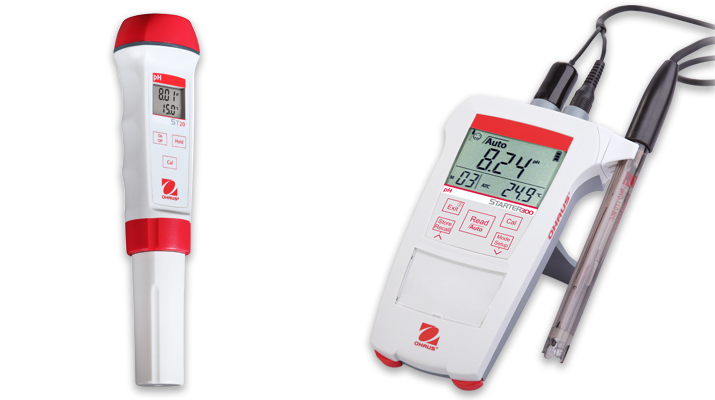
We hope this blog post has helped you understand the methods and test equipment used for soils testing in the field.
Gilson Is Here to Help
Contact our testing experts for more information or to discuss your testing application.
Testing Resources
Standard Test Methods, Specifications, and Practices
Individual test methods and specifications referenced in our product descriptions, blog articles, and videos are available for review or purchase from the professional organizations noted.
- ASTM International (American Society for Testing and Materials)
- AASHTO (American Association of State Highway and Transportation Officials)
- ACI (American Concrete Institute)
- State DOTs (Departments of Transportation)
- ISO (International Organization for Standardization)
- BS (British Standards)
- EN (European Standards)

















